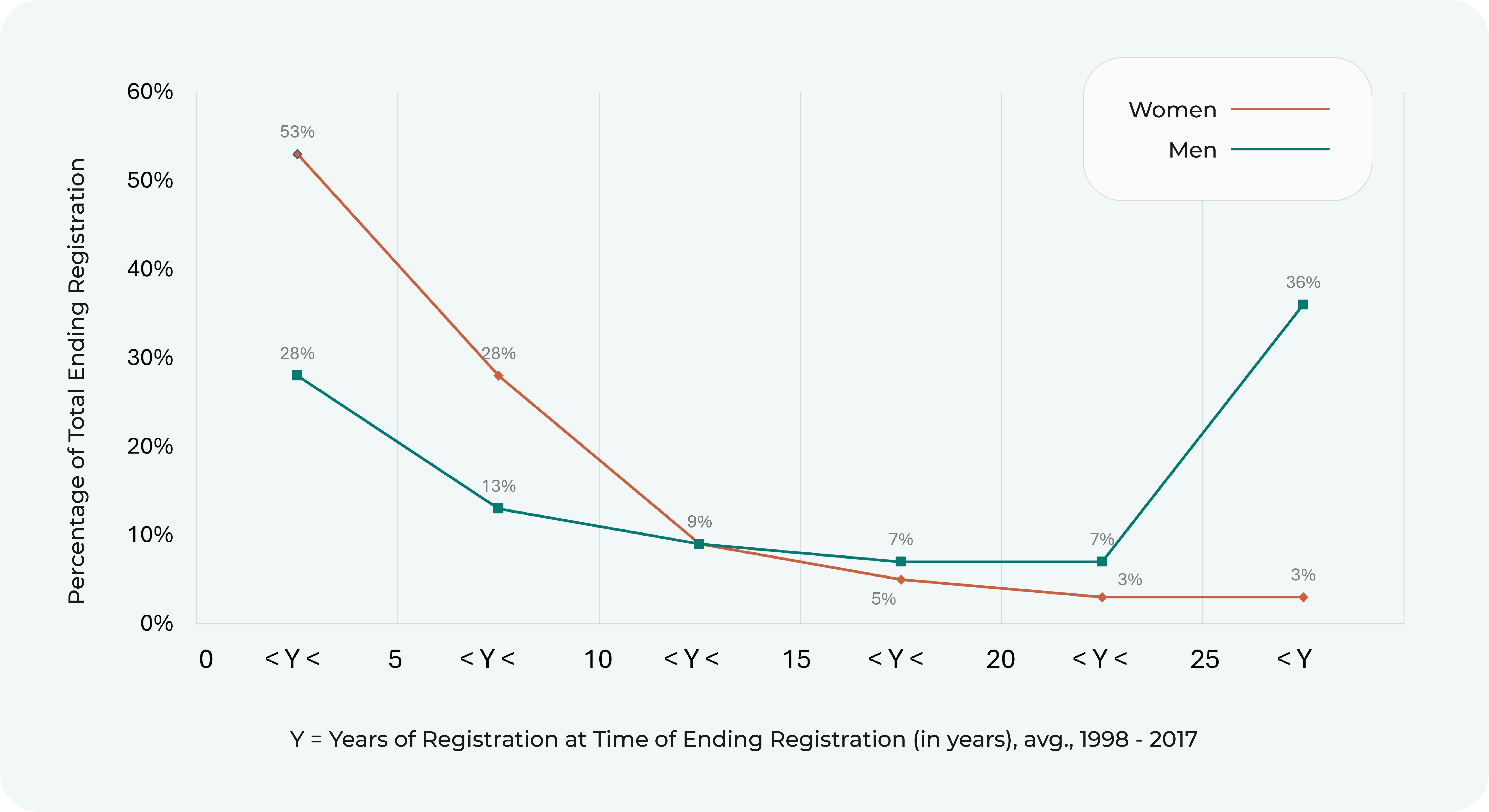Retention Rates of Women in Engineering in British Columbia

Marcie Cochrane, P.Eng., MBA
Women are under-represented in engineering in Canada.
In 2022, Engineers Canada reported that 15% of Professional Engineers in Canada identify as women. Retention contributes to the low representation of women in engineering; in the same reporting year 19% of newly licensed Professional Engineers in Canada identified as women. This difference between newly licensed and total Professional Engineers who identify as women has persisted for decades, indicating that women leave at higher rates than men.
Through a research project conducted in 2018, the author examined retention rates of Professional Engineering (P.Eng.) registrants at Engineers and Geoscientists BC, the regulator for Professional Engineering in British Columbia. Data was examined over a period of 20 years (1998-2017).
Retention rates were examined, analyzing the data to examine when in their careers registrants were leaving. The findings indicate that there is a significant difference in retention rates at different career stages between women and men.
The 20-year data set was analyzed, examining the number of years an individual was registered as a Professional Engineer at the time of ending their registration. The data was grouped into five-year increments and was disaggregated by gender identity. The data was evaluated, identifying the total number of individuals ending their registration in a given year and then calculating the percentage of that total that ended their registration within each of the 5-year increments. The averages for the 20-year data analysis are shown in the graph below.
Analysis
81% of women ending their registration as a Professional Engineer did so in the first 10 years while only 41% of men ending their registration as a Professional Engineer did so in the first 10 years.
- In a given year, of all women ending their registration, 53% had been a Professional Engineer for less than five years and 28% had been a Professional Engineer between five and 10 years.
- Comparatively, of all men ending their registration in a given year, 28% had been a Professional Engineer for less than five years and 13% had been a Professional Engineer between five and 10 years.
- Examining those ending registration with greater than 25 years’ experience, and assumed to be mainly attributed to retirement, this category represented 36% of all men leaving in a given year, but only 3% of all women leaving in a given year.
Findings
-
Both men and women leave at higher rates in the first ten years of their careers, as compared to the middle of their careers (between 10 and 25 years).
-
For those with over 25 years of registration, which can be mainly attributed to retirement, the percentage of men leaving is higher than any other time period. There is no similar increase for the percentage of women leaving with over 25 years of experience because there are very few women registrants left at that stage.
-
Simple assessment of retention rates without analyzing the career stage at which individuals are leaving can lead to incorrection assumptions about retention rates not differing by gender.
Insights
- Efforts are needed to focus on retention of women in engineering, with particular focus on the first 10 years of their careers when women are leaving at significantly higher rates than men.
- Actions to increase the persistence of women in engineering benefit everyone.
- Learn more about the factors that influence the persistence of women in engineering here.
Want to learn more about what you and your organization can do?
Need help developing a strategy and/or implementing specific initiatives?
Let’s talk. Not only have we done the research, but we’ve also worked with a range of organizations to help them build more inclusive workplaces.

